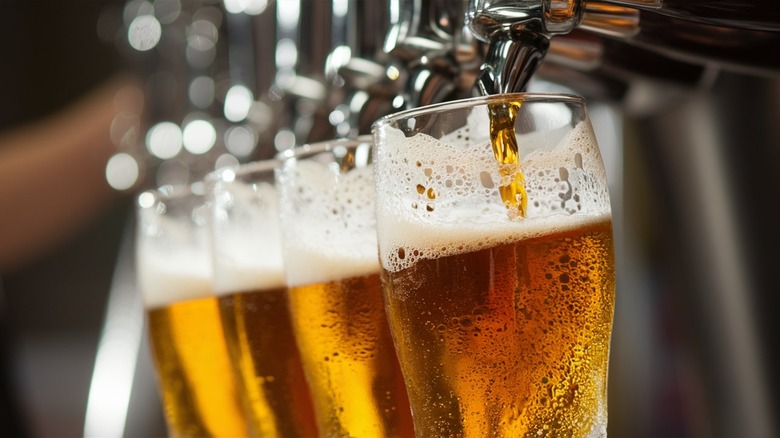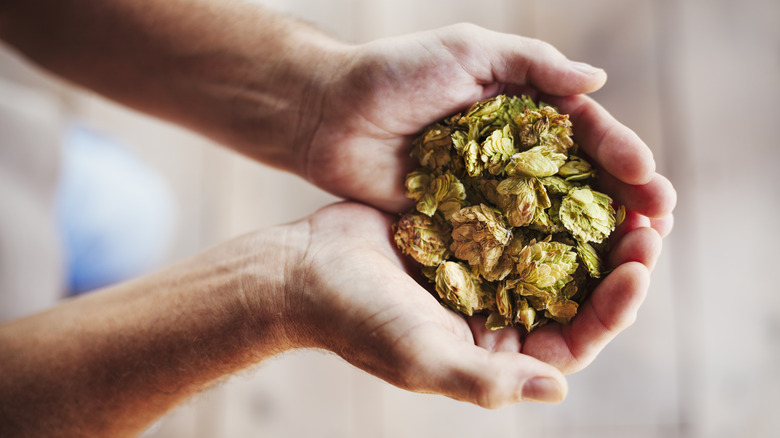What Do Hops Actually Do In Beer?
We may receive a commission on purchases made from links.
Self-professed beer lovers and casual fans alike know that hoppy IPAs have been dominating the craft beer scene for some time now. Hop-forward beers are packed with pleasant bitterness, and hops are the ingredient that makes beer bitter — but there's a difference between a beer tasting "hoppy" and it tasting bitter. So, what do hops do, exactly? Beer is a combination of water, malt or barley, yeast, and hops. Whether it tastes bitter or not, every type of beer contains hops.
Hops are a plant. They come from the perennial Humulus lupulus plant of the Cannabinaceae family, which also includes marijuana and hemp. Hops are the cone-shaped flowers that are harvested from the plant, and they're packed with natural essential oils and acids that seep off into the beer during the brewing process, allowing brewers to manipulate the flavor and aromatic profile of the batch. This crucial ingredient prevents beer from becoming too sweet, structure's a brew's basic aromatic profile, and keeps the head foamier for longer.
Hops can have more or less bittering based on their level of alpha acids, with more-bitter hops having higher alpha acids and less-bitter hops having more essential oils. Lower-acid, higher-essential-oil hops are particularly common for producing juicy, fruity beers with tasting notes of orange, lemon, pineapple, guava, strawberry, and blueberry. Higher-acid hoppy beers typically tote a stronger, distinctive taste that's piney, citrusy, and bitter (not toasty or caramel-y).
Hops control bitterness and determine which tasting notes are more pronounced
Hops are typically added to the wort at the boiling step (this is called "bittering"). The hops boil for roughly an hour to release their alpha acids; drying hop cones into pellet form concentrates the alpha acids for a more robust flavor. Hops added into the batch later in the boiling process will yield a hoppier-tasting beer, while hops added earlier on will dissolve for a milder flavor. Pale ales and IPAs are typically the hoppiest varieties of beers.
Hops can also be added post-boil during fermentation, which is called dry-hopping. Dry-hopping makes for lower bitterness and more aroma — a popular practice for Hazy IPAs and New England IPAs. That lower bitterness also allows for a major hit of juicy fruit flavors like mango, lemon, guava, and apple to shine, which functions especially well in brighter, maltier beers. Some beers are made from "wet hops," which are brewed within 24 hours of harvesting and not dried.
Hops grow best in mild climates with a lot of sun, consistent rainy seasons, and nutrient-rich soil. They thrive between the 40th and 50th parallels, but can be found all over the world. Just like grapes for winemaking, hops feature unique terroirs with distinct profiles for crafting Belgian ales, lagers, or pilsners (which are not the same thing). Saaz hops, for instance, are a crucial ingredient in pilsner-style beers, and they're totally different from the bold, dank Cascade hops that grow in the Pacific Northwest. Other popular varieties include Anchovy, Chinook, Amarillo, El Dorado, and Mosaic.

